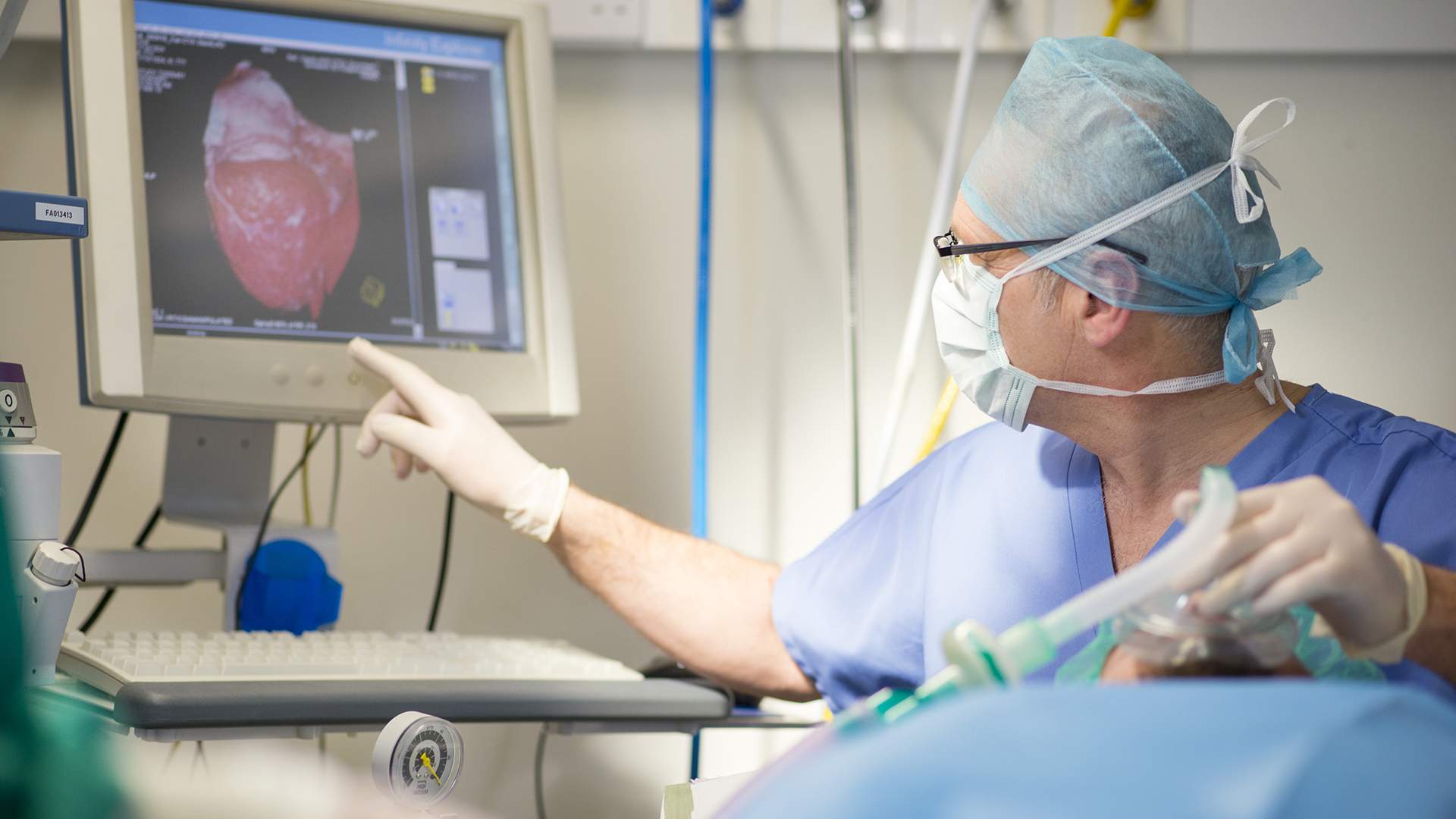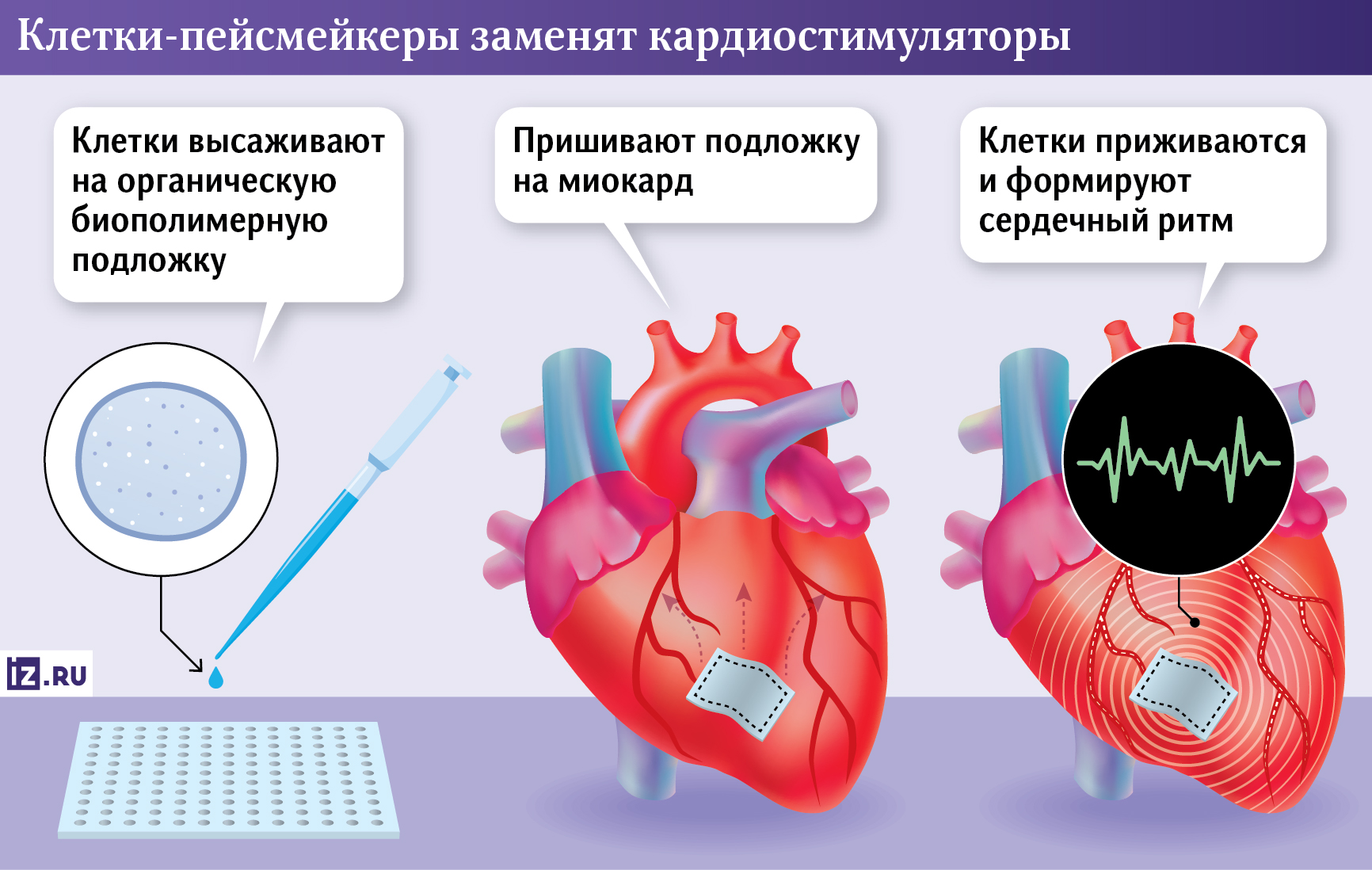- Статьи
- Science and technology
- Substrate to the rescue: the Russian Federation has learned to deliver stimulator cells to the heart
Substrate to the rescue: the Russian Federation has learned to deliver stimulator cells to the heart

Russian scientists have developed a technology for transplanting cells into the heart that can serve as an alternative to electric pacemakers. Their direct introduction into the organ by injection causes trauma and tissue inflammation, so the doctors decided to place them on a special biopolymer substrate. It can be easily attached to the myocardium. After transplantation, the cells are activated by light exposure. Specialists have already managed to successfully perform surgery on the heart of a pig and get after that a stable rhythm. According to cardiologists, the technology may be very promising, but further experiments and human trials are needed for final conclusions.
Set the rhythm
Specialists from the Moscow Institute of Physics and Technology (MIPT) together with colleagues from ITMO have developed a method of delivering cells capable of setting the heart rate. During conventional injection, these organic pacemakers (so-called pacemakers) can cause injury and inflammation of tissues, in addition, they are too quickly removed from the body. To avoid this, they were placed on a special biopolymer porous film of 1 square centimeter with a certain set of molecules, which is firmly "glued" to the myocardium. The technology was successfully tested on an animal.
- During surgery, we sewed the patch onto the pig's heart and stimulated the pacemakers with light of a certain wavelength to control their excitation. After illumination, we were able to record the rhythm we imposed on the heart. The implantation of the cell patch itself took about half an hour, which is the time needed to form the primary connection between the animal's heart tissue and the patch. Then they conducted a light experiment to "wake up" the pacemaker cells and recorded the change in the rhythm of the pig's heart. How long this activity persists remains an open question and will be studied in the coming months. The pig with implanted cells will remain under constant observation, a special device will register its heart rhythm with high accuracy," said Elena Turchaninova, an engineer at the MIPT Laboratory of Experimental and Cellular Medicine and a researcher at the ITMO Advanced Engineering School.
Biological pacesetters are special cells that control the heart rhythm and can transmit control signals for heart contraction. If these cells stop working due to diseases, doctors can install an artificial pacemaker. Each of its installation or replacement is an invasive surgery. Like any surgical procedure, it carries risks for the patient. In addition, the body may begin to reject the pacemaker, which can be fatal. The average lifespan of these devices is about 10 years, then replacement is required. Thus, a person will have to undergo several major surgeries during their lifetime.
Pacemaker transplantation may be an alternative. Rhythm driver cells are grown from stem cells. To better take root in the body, scientists took them in an intermediate state, until they are fully formed. Their transformation into pacemakers is completed after transplantation.

- Many pacemakers have a set constant rhythm - about 80 beats per minute. On the one hand, this ensures the stability of the device, but on the other hand, it reduces the quality of life of a person. For example, it makes it difficult to even climb stairs. Another example would be a pacemaker in children: it does not adapt to growth and hormonal changes in the body. Therefore, the transition from artificial pacemakers to natural, biological ones is extremely urgent," said Valeria Tsvelaya, head of the Laboratory of Experimental and Cellular Medicine at MIPT, senior researcher at the Vladimirsky MONIKI.
Wait for the results
In the immediate plans of the research group from MIPT - to conduct a series of operations on animals and to work out the methodology of medical intervention, namely - to determine the critical mass of pacemakers, which will be enough to "restructure" the heart rhythm with a certain accuracy. After that, similar operations will be carried out already on the human heart connected to the artificial circulation system.
The experiment conducted by scientists can be considered a notable success, so the technology of transplantation of pacemakers is now being developed by physicians around the world, said cardiologist, member of the European Society of Cardiology Yaroslav Ashikhmin.
- The technology will definitely be in demand by physicians. Now all major universities around the world are working to put heart cells in one or another stage of development on skeletons. In the future, this method may become an alternative to electric pacemakers. It is good that our scientists are doing this. But pacemakers are usually located deep in the heart. And we don't know yet how effective stimulation with their transplanted analogs will be. The main problem- in their integration with muscle cells and other elements of the conductive system of the heart, - he noted.
If the transplanted pacemakers will be quite a lot and they will give a strong impulse, the technology can be recognized as working, the expert added.
Attempts to use stem cells in medicine have been made for a long time, but so far they have not brought the desired result, said Alexei Utin, head of the non-invasive revascularization department of the Center for Pathology of Circulatory Organs. According to him, we need more research and convincing evidence that stem cells can help in this case. The idea of using a substrate to place them on the heart sounds reasonable, but we need to wait for the results of the experiment, the specialist summarized.
Переведено сервисом «Яндекс Переводчик»




